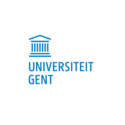In short
Biological therapeutic products, such as antibody concentrates produced from plasma donations, exhibit a variability linked to undesired residues of the raw material used for their production. Even at very low concentrations, these can cause severe secondary effects in the recipient. This project studies the implementation and added value of the so-called proteometic approach (by mass spectrometry) that allows for a complete mapping of these residues in order to prevent any associated risks.
Project description
Medicines produced from blood plasma constitute an extraordinary category of pharmaceutical products due to the biological nature of the raw material from which they are prepared. This nature entails a variability that is inherent in production and control. Today, immunoglobulin (lg) preparations are the leading product in plasma fractionation because they are used both in cases of immunodeficiency and in several autoimmune and inflammatory diseases.
In 2010-2011, several lg batches were withdrawn from the market following thromboembolic (TEE) incidents in recipients. Co-purification of coagulation factor XI was identified as the main intrinsic cause of this issue, highlighting the need for better characterisation of the residual plasma impurities, even at very low concentrations (on the order of ng/mg). Revisions of the applicable quality control guides and methods remained specific to the thromboembolic issue, whereas a very large diversity of contaminants may potentially be present in the finished product.
This project highlights the non-targeted use of mass spectrometry (MS) as an overall approach of choice to allow the fullest possible characterisation of the plasma impurities and thus prevent any residue issues, without any a priori information.
Learn more about this project
A conventional data-dependent acquisition (DDA) MS approach and one of the new data-independent acquisition approaches (SWATH) are studied and discussed. Different sample pre-fractionation methods have also been tested to provide sufficiently sensitive detection.
With the DDA approach preceded by fractionation via a peptide ligand library, more than 30 residual plasma proteins are identified in an lg product. A spike of coagulation factor XI can be identified to within ng/mg, i.e. the pro-thromboembolic threshold observed in vivo (3ng/mg). Each of the tested lg products reveals its own distinctive impurity profile. A semi-quantitative approach based on the normalised relative abundance of precursor ions highlights significantly higher factor XI levels but also other proteins that regulate blood pressure (fibrinogen, angiotensinogen, antithrombin III, complement component C8, etc.) in a positive TEE batch. The main limitation of the DDA approach is its limited reproducibility, which means that the injection has to be repeated up to 8 times.
The SWATCH approach is supposed to solve this problem because, in this case, all the precursor ions are fractionated and not just the most abundant ones as in the DDA approach. It yields spectral data that are supposed to be exhaustive but complex, requiring the use of advanced software and, in most cases, DDA-generated spectral libraries for the targeted extraction of the data are of interest. In order to broaden the monitoring spectrum, the spectral library can be built not only from Ig samples but also from plasma pools. However, the main limiting factor remains its sensitivity. To improve the relative quantification, this time based on the abundance of ion fragments, two quality criteria are proposed and implemented in the data analysis: the specificity of the ion fragments for their precursor ion and the intensity (peak area) of the ion fragments, which is correlated with the reproducibility of the quantification. This correlation may eventually allow for reliable data that require only a single injection. The full potential of the SWATH approach in the context studied, however, appears to be dependent on the development of more sensitive instruments.
Sciensano's project investigator(s):
Service(s) working on this project
Partners



